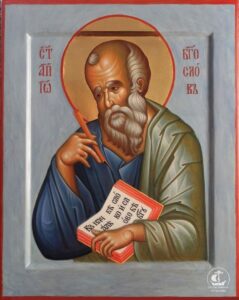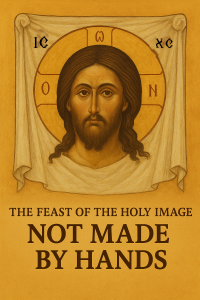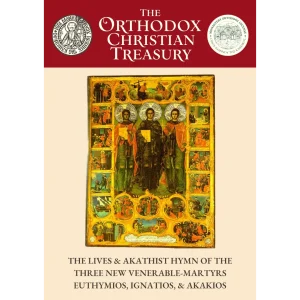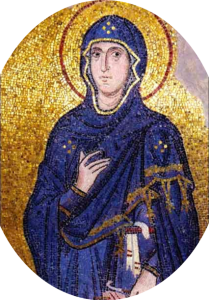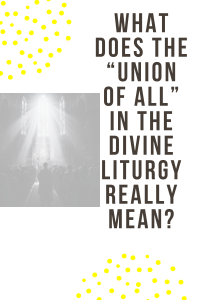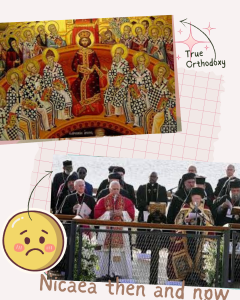The Feast of Mid-Pentecost
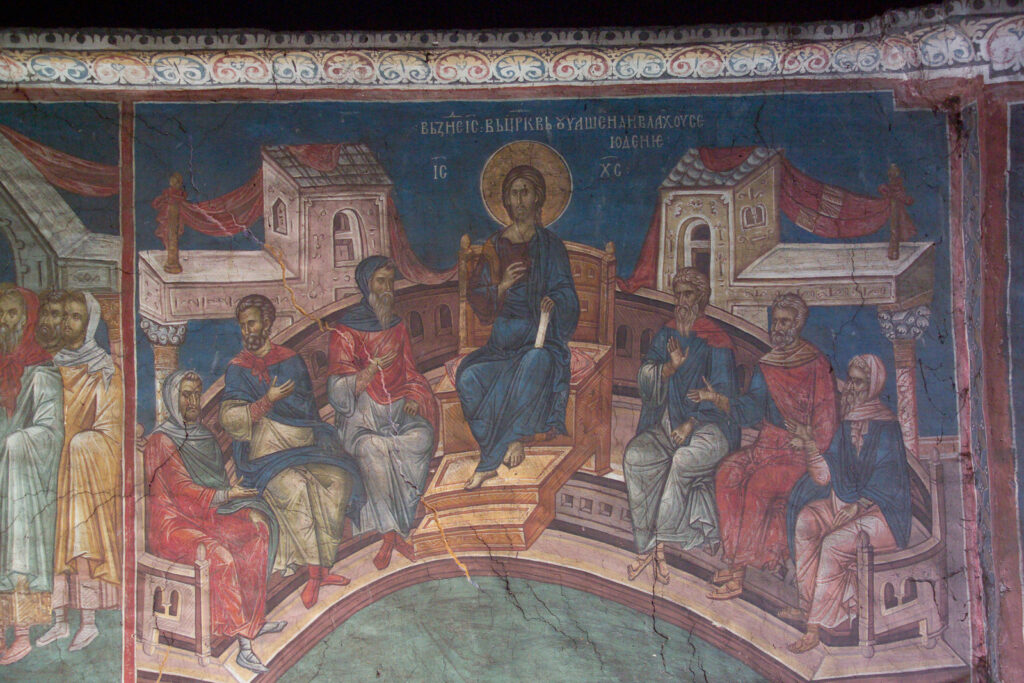
On Wednesday of the fourth week we celebrate the Mid-Feast of Pentecost, i.e. half of the period from Pascha to Pentecost.
This day we commemorate that event from the life of the Savior, when He on the Mid-feast of the Tabernacles taught in the temple about His Own Divine ministry and the mystery of water, under which we understand the beneficial teaching of Christ and the beneficial gifts of the Holy Spirit (1).
The Mid-feast of Holy Pentecost is referred to among the ancient Christian feasts. If its beginning cannot be seen in the canons of the Apostolic [37] and Antiochian Councils [20] concerning the assembly of local councils during the fourth week of Pentecost, then in the time of St. John Chrysostom it is already existing and established by the Holy Church.
In the fifth century Anatolius of Constantinople, in the seventh the Venerable Andrew of Crete, in the eighth St. John of Damascus, in the ninth the Venerable Theophanes the Confessor wrote church hymns for the Mid-feast, with which the Holy Church even now praises the Lord in the Mid-feast of Pentecost.
Standing between the day of Pascha and the day of Descent of the Holy Spirit, the Mid-feast serves as a bond between these two great Christian celebrations: together with the continuing celebration of the first of these the Mid-feast reminds us of the approach of the feast of the Descent of the Holy Spirit, and also the feast of the Ascension of the Lord.
“Let us glorify, brethren, – the Holy Church appeals to us, – the resurrection of Christ the Savior, and having reached the middle of the feast of the Master, let us most closely keep the commandments of God, that we may also be worthy to celebrate the Ascension, and the Coming of the Holy Spirit (The Praises, Verse after Glory, Both now and Ever by Anatolius) “; “Having reached the middle of the divine feasts let us who are godly wise hasten to learn the fulfillment of the divine virtues (canon 1, Ode five, Troparion 1).”
The Troparion, Tone 8
In the middle of the Feast, O Savior, Fill my thirsting soul with the waters of godliness, as Thou didst cry to all: If anyone thirsts, let him come to me and drink! O Christ God, Fountain of our life, glory to Thee! (1967 OCA translation)
The Kontakion, tone 4
Christ God, the Creator and Master of all, Cried to all in the midst of the feast of the law: Come and draw the water of immortality! We fall before Thee and faithfully cry: Grant us Thy bounties, for Thou art the Fountain of our life. (1967 OCA translation)
On the eve of the Mid-feast Great Vespers is served separately from Matins (see Church Messenger 1892, 33), and we do not sing the verses “Blessed is the Man”, but we sing the Kathisma specified for the day; at Matins served on the very day of the Mid-feast the Polyeleon is not sung, but we sing the Great Doxology. Instead of “It is truly meet” in Matins and the Liturgy we do not sing “Shine, shine”, but we sing the Hirmos of the Canon: “Virginity is foreign to mothers.”
Readings:
(1) Micah 4:2,3,5; 5:2-5,8. (2) Isaiah 55:1-3, 6-13. (3) Proverbs 9:1-11.
The Epistle
sel. 34, Acts 14:6-18.
The Gospel
sel. 26, John 7:14-30.
Following the example of the Old Testament Church and as a sign of the grace of the Holy Spirit, which the Savior has attributed to water granting life of salvation to the thirsty (2), our Church has on this day established to proceed from the temples with a cross procession to a water spring, for the Lesser Blessing of Water.
The Mid-feast is celebrated for 8 days until the Wednesday of 5th week (see below, the Sunday of the Samaritan Woman).
(1) The last, the eighth, day of the Old Testament feast of the Tabernacles, commemorating the forty year wandering of the Jews in the desert (that is why the people during this feast lived in tabernacles, i.e. tents made from wood branches), was accompanied by the following action: With a countless confluence of people, the high priest left the temple of Solomon to the spring of Siloam, at the foot of Zion; with a golden chalice scooped up light and clean water; at the sound of the trumpet they returned to the temple, he mixed the water with wine and poured it over the altar of oblation. The people during this action without stopping sang the great alleluia, i.e. the six psalms (112-117). By this action we commemorate the wonderful gift of drinking water for the Jews in the desert, by Moses destroying a rock. Having taken an instance from this sign, Jesus Christ also proclaims Himself as the source of the true living water (for whom both the water of the desert, and the water! of the Siloam Spring, together with other springs in the Promised Land, were only prototypes), at the same time teaching that the believer in Him filled with the true living water, will himself become a beneficial vessel, from which flows out plenty of the multifarious abilities of the Spirit of God, and not only will he not thirst forever, but will receive the strength to act with the saving image even for others (John 7:37-39). (2) In the opinion of some, this custom, belonging to number of our local customs, was in practice under the influence of the Church Gospel commemoration of events connected to this day (see Works of the Kazan Theological Academy 1891, 3rd vol., page 126).
S. V. Bulgakov, Manual for Church Servers, 2nd ed. 1274 pp. (Kharkov, 1900) pp. 592-3. Translation: Archpriest Eugene D. Tarris (c) 8 May 2001

